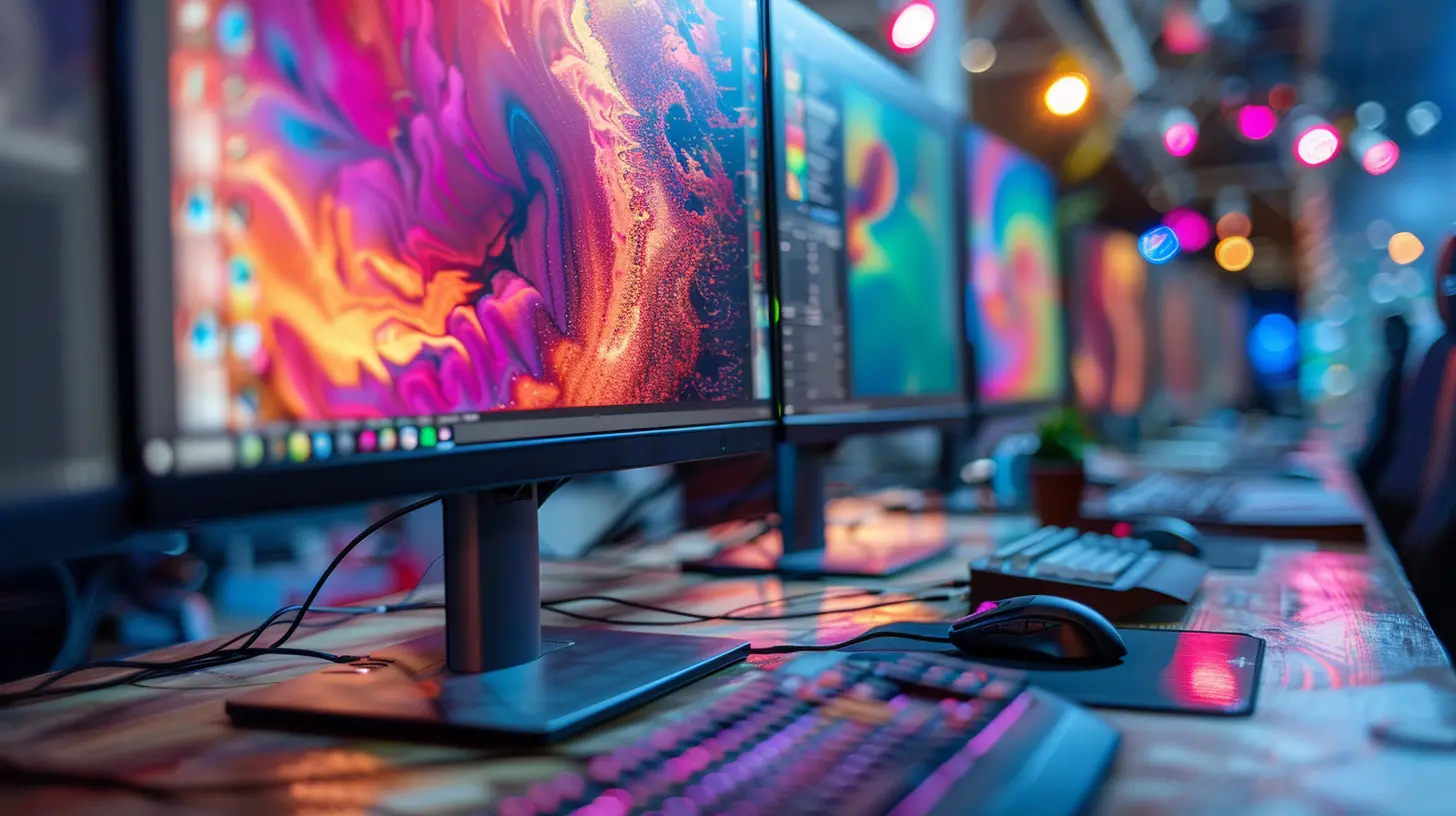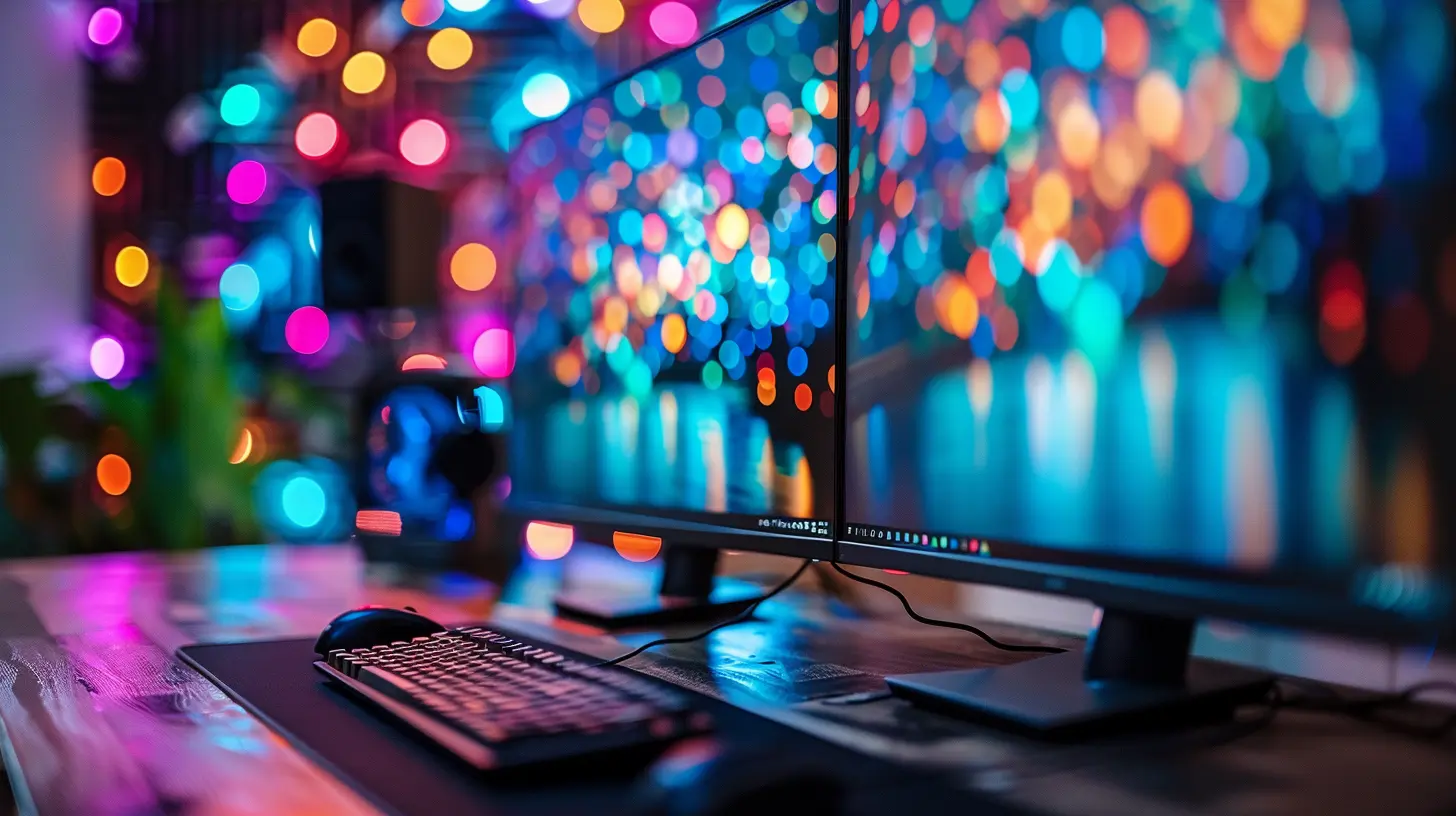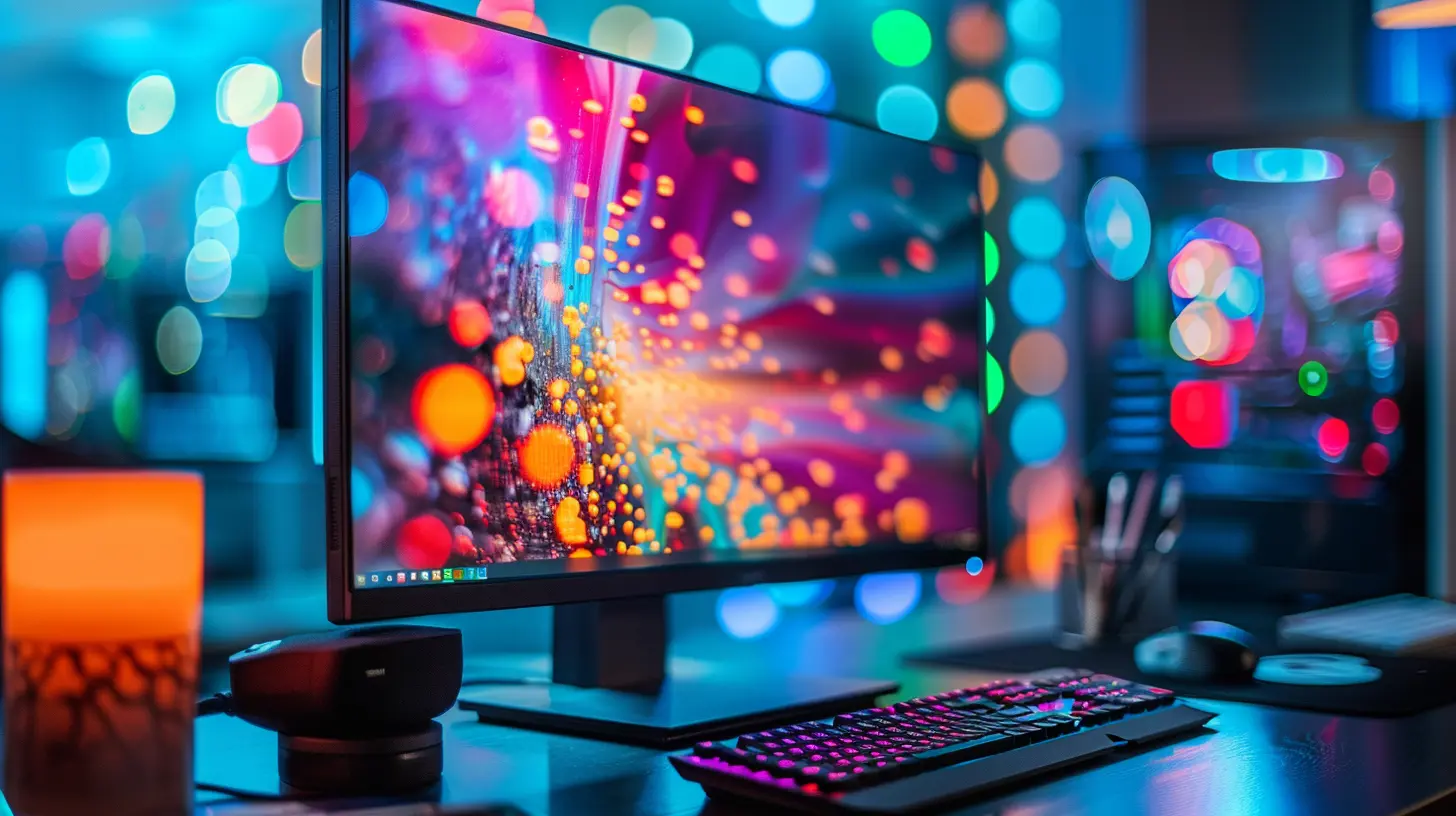The Best Monitors for Graphic Designers: Enhancing Color Accuracy
11 June 2025
So, you're a graphic designer, right? You know how crucial it is to have a monitor that delivers precise color accuracy. It’s not just about making things look pretty on the screen – it’s about making sure what you see on your monitor matches what comes out in print or looks the same on other devices. A poorly calibrated monitor can ruin your work. Imagine spending hours crafting a beautiful design, only for it to appear dull or distorted when viewed elsewhere. Nightmare, right?
Choosing the right monitor is a game-changer. Whether you're working on branding, web design, or digital art, you need a display that shows every hue, tone, and gradient exactly as it is. But with so many options out there, how do you pick the best one? No worries, I’ve got your back. Let’s dive into the world of monitors and find out which ones are the best for graphic designers who crave impeccable color accuracy.

Why Color Accuracy Matters for Graphic Designers
First things first – why all the fuss about color accuracy? Well, as a graphic designer, your work is visual. It’s all about conveying messages, emotions, and brands through colors and visuals. If the colors on your screen aren’t accurate, your designs can get misinterpreted. What looks vibrant and lively on your monitor might look washed out or too intense on someone else’s screen or in print.For example, imagine designing a logo for a client. You’ve nailed the perfect shade of blue that represents their brand’s identity. But when printed or viewed on another device, it’s a completely different shade. That’s not only frustrating but could potentially harm your reputation as a designer. Accurate colors ensure consistency across all platforms, whether digital or print.

Key Features to Look For in a Monitor for Graphic Design
Before we jump into the list of top monitors, let's talk about what makes a monitor ideal for graphic design. There are a few key factors you need to consider:1. Color Gamut
A wide color gamut means the monitor can display more colors. The most common color gamuts are sRGB, Adobe RGB, and DCI-P3. While sRGB is the standard for web design, Adobe RGB offers a wider range of colors, which is fantastic for print work. If you’re working in print, you’ll want a monitor that supports Adobe RGB for more precise color matching.2. Color Calibration
Even the best monitor can lose accuracy over time. That’s why having a display that either comes pre-calibrated or is easy to recalibrate is essential. Some monitors even come with built-in calibration tools, which can save you from headaches down the line.3. Resolution
The higher the resolution, the better the clarity. For graphic designers, a minimum of 1440p (QHD) is recommended, but many prefer 4K or even 5K monitors for ultra-clear images. Higher resolution allows you to see fine details in your work, which is especially useful when you’re working on intricate designs or large-scale projects.4. Panel Type
When it comes to color accuracy, not all panel types are created equal. You want to avoid TN panels, which are usually found in cheaper monitors, as they tend to have poor color reproduction and limited viewing angles. Instead, opt for IPS (In-Plane Switching) panels. IPS panels offer better color accuracy and wider viewing angles, which is crucial for design work.5. Brightness and Contrast Ratio
A monitor with high brightness and a strong contrast ratio will help you see more details, especially when working in low-light environments or on designs that require fine-tuning shadows and highlights. A contrast ratio of 1000:1 is a good baseline, but higher is always better.6. Size and Aspect Ratio
Bigger is often better when it comes to monitors for graphic design. A larger screen gives you more space to work, especially when dealing with multiple windows or complex designs. Many designers prefer 27-inch screens or larger. As for aspect ratio, while 16:9 is the standard, there are ultra-wide monitors with a 21:9 aspect ratio, giving you even more room to play with.
The Best Monitors for Graphic Designers in 2023
Now that we’ve covered the essentials, let’s take a look at some of the best monitors for graphic designers that enhance color accuracy. These picks are based on a combination of color performance, resolution, and overall design capabilities.1. Eizo ColorEdge CG319X
Eizo is like the Rolls-Royce of monitors for graphic designers, and the ColorEdge CG319X is no exception. It’s a 31-inch 4K monitor that covers 99% of the Adobe RGB color space and 98% of DCI-P3, making it ideal for both print and digital work. It comes with a built-in hardware calibrator, ensuring that your colors stay accurate over time.The contrast ratio of 1500:1 and a brightness of 350 nits make sure that you can see every little detail in your design, even the subtle ones. Its 17:9 aspect ratio is also a bonus for those working in video editing or film production.
If you’re serious about color accuracy and willing to invest, this is one of the best monitors money can buy.
2. BenQ PD3220U
BenQ has been making waves in the design community, and the PD3220U is a fantastic choice for graphic designers. This 32-inch 4K monitor features 100% sRGB and 95% DCI-P3 color coverage, making it perfect for both web and video work.What’s really cool is that it comes with BenQ’s Hotkey Puck, which allows you to switch between different color modes (like Adobe RGB, sRGB, or DCI-P3) with just a click. The monitor also supports HDR10, which is great if you’re working with high dynamic range content.
For its price point, it’s a solid choice, offering great value for designers who need a big, accurate display without breaking the bank.
3. Dell UltraSharp UP2720Q
Dell has long been a favorite among professionals, and the UltraSharp UP2720Q is no exception. This 27-inch 4K monitor is factory-calibrated for 100% Adobe RGB and 98% DCI-P3 color spaces, ensuring stunning color accuracy right out of the box.What sets this monitor apart is its built-in colorimeter, which allows for easy recalibration without the need for external tools. It’s a great feature for designers who need to ensure their work remains consistent over time. The monitor also supports Thunderbolt 3, which is great if you’re working with a MacBook or other high-end laptops.
4. LG 27UK850-W
Looking for something a bit more budget-friendly? The LG 27UK850-W is a solid 27-inch 4K monitor that offers excellent color accuracy for its price. It covers 99% of the sRGB color space and comes factory-calibrated, making it great for web-based design work.While it doesn’t cover as much of the Adobe RGB or DCI-P3 spaces as some of the higher-end monitors, it’s still a fantastic value for designers who need solid performance without the hefty price tag. USB-C connectivity is a nice touch, especially if you’re working with a MacBook or want a streamlined setup.
5. ASUS ProArt PA32UCX
The ASUS ProArt PA32UCX is a beast of a monitor, specifically designed for creative professionals who need the best in color accuracy and performance. This 32-inch 4K monitor covers 99.5% Adobe RGB, 99% DCI-P3, and supports Dolby Vision HDR, making it ideal for both graphic design and video editing.What’s really impressive is its mini-LED technology, which provides incredible brightness (up to 1000 nits) and contrast. If you’re working with HDR content or need to see every subtle detail in your designs, this monitor won’t disappoint.
The ProArt PA32UCX also comes with Calman Ready calibration, ensuring long-term color accuracy.
Final Thoughts: The Right Monitor Can Elevate Your Design Work
Let’s be honest, as a graphic designer, your monitor is your window to the creative world. It’s where your ideas come to life. Investing in a high-quality monitor with top-tier color accuracy is one of the best decisions you can make for your career. Whether you’re working in digital or print, the right display ensures that the colors you see are the colors everyone else sees – and that’s a big deal.Of course, the best monitor for you depends on your specific needs, budget, and the type of work you do. But one thing is clear: whether you’re going for a high-end model like the Eizo ColorEdge CG319X or a more budget-friendly option like the LG 27UK850-W, finding a monitor with great color accuracy will make your designs shine.
Remember, your monitor is more than just a screen – it’s a tool that can make or break your designs. So, choose wisely!
all images in this post were generated using AI tools
Category:
Computer PeripheralsAuthor:

Adeline Taylor
Discussion
rate this article
2 comments
Eden McKee
For graphic designers, investing in a monitor with superior color accuracy is crucial. It not only enhances creativity but also ensures that the final output remains true to the original vision.
June 12, 2025 at 3:38 AM

Adeline Taylor
Absolutely! A monitor with excellent color accuracy is essential for graphic designers to effectively bring their creative visions to life and ensure the integrity of their work.
Maverick Morgan
Great article! It's crucial for graphic designers to prioritize color accuracy when choosing a monitor. I appreciate the insights on different models. Including tips on calibration techniques would further enhance this guide—thanks for sharing this valuable information!
June 11, 2025 at 4:02 AM

Adeline Taylor
Thank you for your feedback! I appreciate your suggestion on including calibration techniques—I'll consider that for future updates. Glad you found the article helpful!


